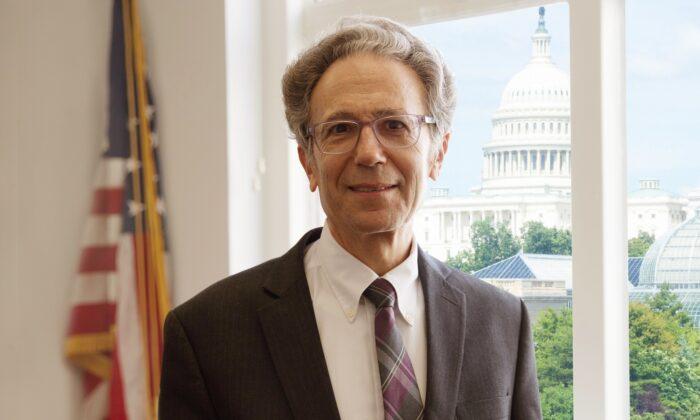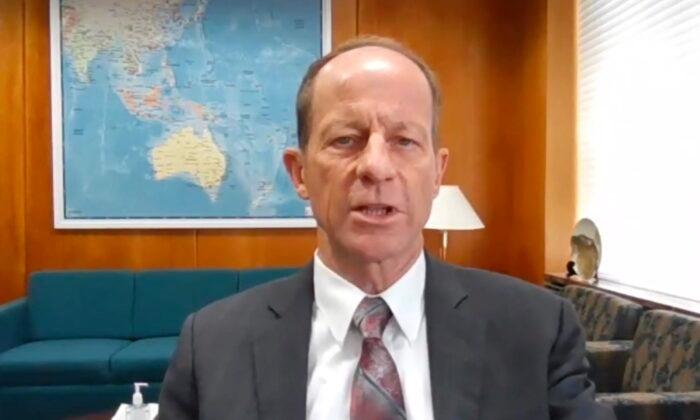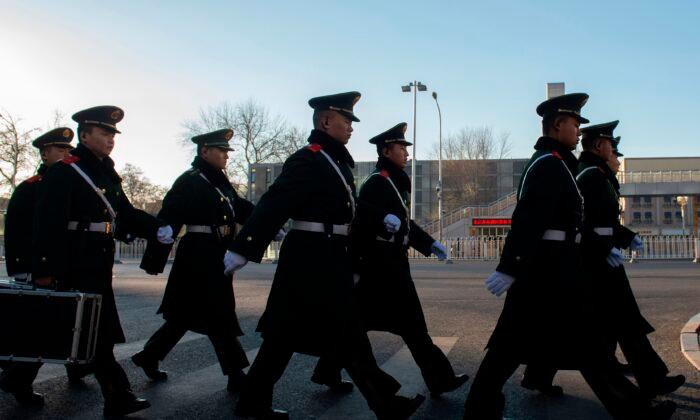WASHINGTON—“There hasn’t been a shot fired in anger in Asia since 1979.”
So said a leading think-tank scholar recently in Washington, opening a discussion among Asia-focused academics on China and its relationships with the other “great powers” of the United States, Russia, and Japan.
At a time when there is strong bi-partisan support in Washington for tough economic, national security, and human rights policies toward China, many of the views expressed by analysts at the Brookings Institution event served to remind listeners that more moderate policy perspectives on China still exist.
The US and China
Ryan Hass, a Fellow at the Brookings Institution and a former Obama-era National Security Council (NSC) official, said that “there are a number of reports around town that there will need to be an intensification of the relationship” between the United States and China “before it can be better.”Saying that there is “an unsettled debate on China,” Hass said that he tries “to focus on why the relationship has been deteriorating and what we should do about it,” rather than on “superficial” analyses that blame one leader or the other.
Hass said that it is important to focus on what the United States is “trying to achieve” with China.
“We are trying to get them to be a force for good,” he said. We should want to “preserve access to the most dynamic part of the world,” Haas continued, referring to Asia, rather than to North America or Europe.
Saying that “this downturn” in the U.S.-China relationship is different, Hass made a point that “all previous declines between the two countries have been event driven, and when the event was over, we got back to normal.”
Russia and China
“Russia is dependent on China” and is “the junior partner” in the increasingly close relationship that has been developing between China and Russia, said Angela Stent of Brookings and Georgetown University.Stent said that the two countries have deepened ties since China stepped in to help Russia when the former Soviet nation faced U.S. sanctions for its invasion of Crimea in 2014.
Not all analysts agree that Russia is necessarily subordinate to China, however.
Dibb said later in the South China Morning Post that Russia’s military equipment sales to China include “modern quiet submarines, modern supersonic anti-ship missiles, and he [Putin] has offered to build a ballistic missile warning centre for China—this is cutting edge stuff”.
And as China finds itself increasingly dependent on foreign sources for its growing energy needs, it is Russia’s state-controlled Gazprom which will supply an estimated $400 billion worth of natural gas to China over the next 30 years, with its opening late last year of the first portion of a pipeline project linking the two countries.
But both analysts agree that both nations share key perspectives which bring them together. First, both look at the United States with a common “set of grievances.” Second, both nations believe in a post-West global order. And third, China and Russia will never criticize one another for their respective domestic policies or behavior.
Japan and China
Japan enjoys a significant reputational advantage over China in Southeast Asia, said Mireya Solis Director of Brookings’ Center for East Asia Policy Studies.Surveys show that 62 percent of countries receiving Japanese investment see the nation as trustworthy. China, on the other hand, receives nearly the same score, but in reverse, with 60 percent of southeast Asian nations seeing China as the least trustworthy country in the region.
China’s reputational challenges are somewhat offset by its freedom-of-choice posture in international relations, Solis indicated.
Saying “China is doing something that the U.S. doesn’t do enough,” Solis said that China does not put up “binary options” requiring countries to make a choice between partners.
That policy has paved the way for a “noticeable thawing” in the relationship between China and Japan, she said. The main factor in that change is “uncertainty regarding the United States”, she added.
The United States is Japan’s only ally by treaty.
With that “uncertainty” the “biggest driving force behind the rapprochement between China and Japan,” the renewal of a tentatively closer relationship with China still “in no way represents a reorder of Asia.”
In fact, she said, “the regional order in Asia is competitive but not exclusionary”.
And while China is the top trading partner in the region, Japan and the United States are the top providers of foreign direct investment (FDI) in southeast Asia.
India and China
“India has had a consistent view of China for the last 50 years,” said Tanvi Madan, Director of the India Project at Brookings.Recently, however, Indian Prime Minister Modi “has been talking about Chinese aggression in the area.” Unusual for Indian diplomatic protocol, Modi named China, rather than obliquely referring to it. China, said Madan, “is usually the country that is not named.”
“India also complains about trade deficits”, she said.
In all, though, “India thinks far more about this relationship than China does.” India, she added, “has partners, but not allies.”
Multiple issues negatively impact the Indian–Chinese relationship.
China’s long-standing relationship with and support for arch-rival Pakistan is one. The Dalai Lama is another. In exile and reviled by China, he has found sanctuary for more than 60 years as a refugee in India.
But although there is a “fundamental lack of trust” of China, “India does not share the Trump administration’s concern about the ideological challenge” of a close relationship with China, Madan said.
In the “balancing strategy vis-a-vis China, India sees Russia as part of its China solution.”
India still buys Russian military equipment, for example, which, she noted, “causes problems on Capitol Hill.”
But as Ankit Panda, Senior Editor at The Diplomat wrote in the South China Morning Post in June 2019, “During Modi’s first term from 2014-2019, India unambiguously recognised that its strategic interests in Asia would be best served by betting on the US.”
The Consensus
While China is drawing significantly closer to Russia economically and militarily, maintaining a status quo with India, and slowly allowing its relations with long-time foe Japan to warm, it is with the United States that is relations are changing most dramatically, analysts agree.Asked if the United States was pulling away from China, Hass said, “The decoupling train has already left the station. Now the question is, how far is it going to travel?”




